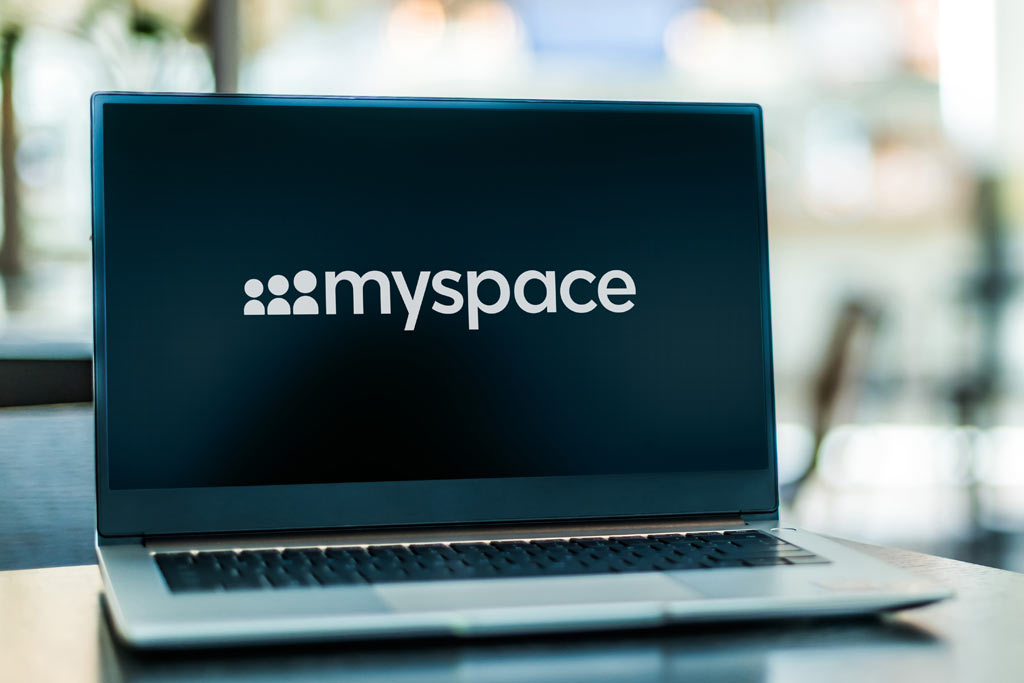Myspace was one of the earliest and most popular social media platforms of the early 2000s. Launched in 2003, the social networking site quickly gained popularity and by 2006, it had become the most visited website in the United States, surpassing even Google in terms of page views. At its peak there were over 100 million Myspace users. However, by 2008, the site began to decline, and it was eventually overtaken by Facebook as the dominant social networking site. Let’s dive into the history of the social media platform, and find out what happened to myspace.
The Rise of Myspace
The idea for Myspace came from co-founders Tom Anderson and Chris DeWolfe, who met while working at the same company in Los Angeles. They saw an opportunity to create a social networking website that would allow people to connect with each other online.
Anderson and DeWolfe were employees of an internet marketing company called eUniverse (later renamed Intermix Media). Anderson was working in product development and DeWolfe was the CEO of the company. They both shared a passion for social networking and saw the potential for a new platform that could connect people online in a more meaningful way. They began working on Myspace as a side project, initially focused on the music industry, but soon realized its potential as a mainstream social networking site.
Other early team members included Aber Whitcomb, who was responsible for building the site’s infrastructure and scaling it to support a rapidly growing user base, and Josh Berman, who oversaw the site’s design and user interface.
Another key player in Myspace was Brad Greenspan, one of the original founders of eUniverse. He served as the CEO of Myspace from 1998 until 2003, when he was replaced by DeWolfe. Greenspan remained an investor and board member of Myspace after stepping down as CEO.
Together, this core team was responsible for developing the initial concept for Myspace and building the platform from the ground up. They worked tirelessly to create a site that would provide a new and innovative way for people to connect and share online, and their efforts helped to shape the future of social media and online communities.
But the site’s early history was not without controversy. Greenspan, who founded the web analytics company LiveUniverse and the China-focused media company BroadWebAsia in addition to his role at Myspace, filed a lawsuit against Myspace in 2009. He alleged that he had been forced out of the company and had not received fair compensation for his shares. The case was ultimately settled out of court.
Myspace’s Influence
There were many things that made Myspace a unique and popular social media platform during its peak years. Here are some of the best things about Myspace:
- Customizable profiles: The platform allowed users to create a highly customizable Myspace profile, including the ability to remove an old profile, add unique backgrounds, graphics, and music to a user profile page. This allowed users to express their individuality and creativity in a way that was not possible on other social media platforms at the time.
- Music promotion: Myspace was initially intended as a platform for musicians and bands to connect with fans and promote their music. This focus on music helped to create a vibrant and supportive community of music lovers and creators on the site. Myspace also launched a music platform in 2006, which allowed users to stream music from major labels for free.
- Friend network: Myspace’s emphasis on friends and social connections helped to create a strong sense of community among its users. Users could add friends, join groups, and participate in discussions, which made it easy to connect with like-minded people.
- Emerging artists: Myspace was a breeding ground for new and emerging artists, providing a platform for them to showcase their work and gain exposure. Many artists, including Arctic Monkeys, Lily Allen, and Colbie Caillat, were discovered on Myspace and went on to achieve success in the music industry.
- Creativity and expression: Myspace encouraged creativity and self-expression, allowing users to share their artwork, writing, and other creative endeavors with a wider audience. This helped to create a vibrant and diverse community of artists and creators on the site.
Myspace’s Competition
Friendster and Myspace were two of the earliest social media sites, and were popular in the early to mid-2000s. While the web pages shared some similarities, there were also significant differences between the two platforms.
One of the key differences between Friendster and Myspace was their target audience. Friendster was primarily focused on connecting people with existing friends and building new friendships, while Myspace was more focused on enabling self-expression and creativity, particularly in the areas of music and entertainment.
Another major difference between the two sites was their design and user interface. Friendster had a relatively simple and straightforward interface, with a focus on user profiles and messaging. Myspace, on the other hand, offered a more customizable and creative platform, with users able to personalize their profiles with music, videos, and custom backgrounds.
In terms of popularity, both Friendster and Myspace were extremely successful in their early years, with millions of registered users. However, Myspace eventually surpassed Friendster in popularity and became the dominant social networking site for a time, thanks in part to its focus on music and entertainment.
During its peak years in the mid-2000s, Myspace had a number of very popular accounts. Some of the most popular accounts were:
- Tom Anderson – “MySpace Tom” is one of the co-founders of Myspace, and he was automatically added as a first friend to every new Myspace account. He quickly became one of the most popular people on the site, with millions of followers and a net worth of $60M.
- Tila Tequila – Tila Tequila is a model and reality TV star who became famous on Myspace. She had millions of friends and used the platform to launch her career.
- Jeffree Star – Jeffree Star is a musician and makeup artist who gained a large following on Myspace. He used the site to promote his music and fashion lines rather than using search results alone.
- Cara Cunningham – Cara Cunningham (formerly Chris Crocker) is a comedian and video blogger who gained fame for her viral video “Leave Britney Alone!” She used Myspace to promote her videos and build a following.
- Lily Allen – Lily Allen is a popular musician who used Myspace to promote her music and connect with fans. She was one of the first mainstream musicians to use the platform in this way.
Myspace’s popularity continued to grow, and by 2006, it had overtaken Yahoo! as the most visited website in the United States. The site had also attracted the attention of major media companies, who saw it as a way to reach a younger audience, especially with Myspace music. In 2005, News Corporation purchased Myspace for $580 million.
According to Wikipedia, DeWolfe and Mark Zuckerberg were engaged in talks about an acquisition. There is no evidence to suggest that Myspace ever attempted to acquire Facebook. In fact, it is more likely that the opposite scenario occurred. According to various reports, Facebook attempted to acquire Myspace in 2005, when Myspace was still the dominant social networking site. However, Myspace declined the offer and opted to remain independent. This decision proved to be costly, as Facebook eventually overtook Myspace in popularity and became the dominant social media platform.
It’s worth noting that Myspace did make a number of acquisitions of its own during its heyday, including the purchase of the music streaming service Imeem in 2009. However, these acquisitions were generally aimed at expanding Myspace’s user base and offering new features and services, rather than directly competing with Facebook.
The Fall of Myspace
Despite its early success, Myspace began to decline in popularity in the late 2000s. There were several factors that contributed to this decline, including:
1. Competition from Facebook
One of the biggest factors in Myspace’s decline was the rise of Facebook. Facebook launched in 2004, and by 2008, it had become the dominant social networking site among college students. Facebook had several advantages over Myspace, including a cleaner and more user-friendly interface, better privacy controls, and a more streamlined user experience. Many users began to abandon Myspace in favor of Facebook, and by 2011, Facebook had overtaken Myspace in terms of monthly active users.
2. Spam and Malware
Another factor that contributed to Myspace’s decline was the presence of spam and malware on the site. Because Myspace allowed users to customize their profiles with HTML code, it was easy for spammers and hackers to embed malicious code in their profiles. This led to a rise in spam and phishing attacks on the site, which made many users wary of using it.
3. Lack of Innovation
As Facebook began to dominate the social networking market, Myspace struggled to keep up. The site had initially been known for its customizable user profiles, but this feature became a liability as users began to prefer a more streamlined experience. Myspace also failed to innovate in other areas, such as mobile apps and social gaming, which left it trailing behind other social networking sites.
4. Management and Ownership Changes
Myspace went through several management changes, and new owners in the late 2000s and early 2010s which also contributed to its decline.
Owen Van Natta was the Chief Operating Officer (COO) of Myspace from April 2009 to February 2010. He was brought in to help turn around the struggling social media platform, which had been losing users and revenue to rivals like Facebook.
As COO, Van Natta was responsible for overseeing various aspects of Myspace’s operations, including advertising, content, and product development. He worked closely with Myspace CEO Chris DeWolfe to implement a number of changes and initiatives aimed at revitalizing the platform, such as improving the user experience and enhancing the site’s music and entertainment offerings.
Despite these efforts, Myspace continued to struggle, and Van Natta resigned from his position in early 2010. After leaving Myspace, he went on to serve in various executive roles at other tech companies, including Facebook and Zynga.
In 2011, Justin Timberlake became a part-owner and investor in Myspace after it was acquired by Specific Media, a digital media company that Timberlake had been working with to develop new digital content.
Timberlake’s involvement in Myspace was primarily focused on rebranding and redesigning the platform, with the goal of revitalizing the site and attracting new users. He was heavily involved in the redesign of the site’s user interface and features, and he also played a role in the site’s marketing and promotion.
Despite these efforts, Myspace continued to decline in popularity, and Timberlake’s involvement with the site ultimately came to an end in 2016 when it was acquired by Time Inc.
While Timberlake’s involvement with Myspace was relatively short-lived, it is a testament to the enduring impact that the platform has had on popular culture and the music industry. Myspace played an important role in the early careers of many musicians, including Timberlake himself, and it remains an important milestone in the history of social media and online communities.
Meredith Corporation acquired Myspace as part of its acquisition of Time Inc. in January 2018. Time Inc. had owned Myspace since 2016, when it acquired the social media platform from Specific Media.
Meredith Corporation is a media and publishing company that owns a wide range of brands and publications, including Better Homes & Gardens, People, and InStyle. The acquisition of Myspace was seen as a strategic move to expand Meredith’s digital portfolio and reach a wider audience.
Since the acquisition, Meredith has continued to operate Myspace, but the platform has struggled to regain its former popularity and relevance in a crowded social media landscape. However, Myspace remains an important part of the history of social media and online communities, and its legacy continues to be felt in the many platforms that have been inspired by its success.
Related:


